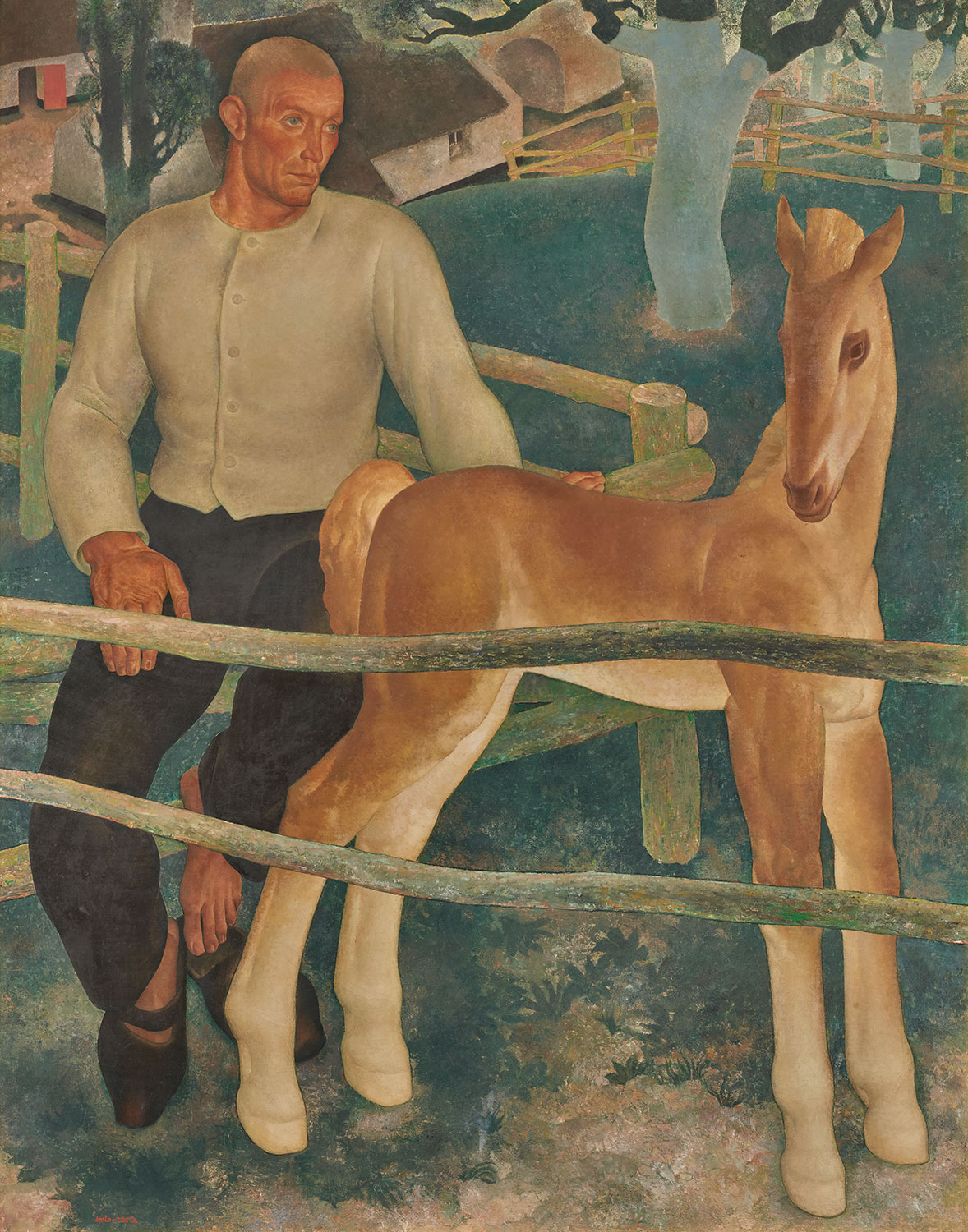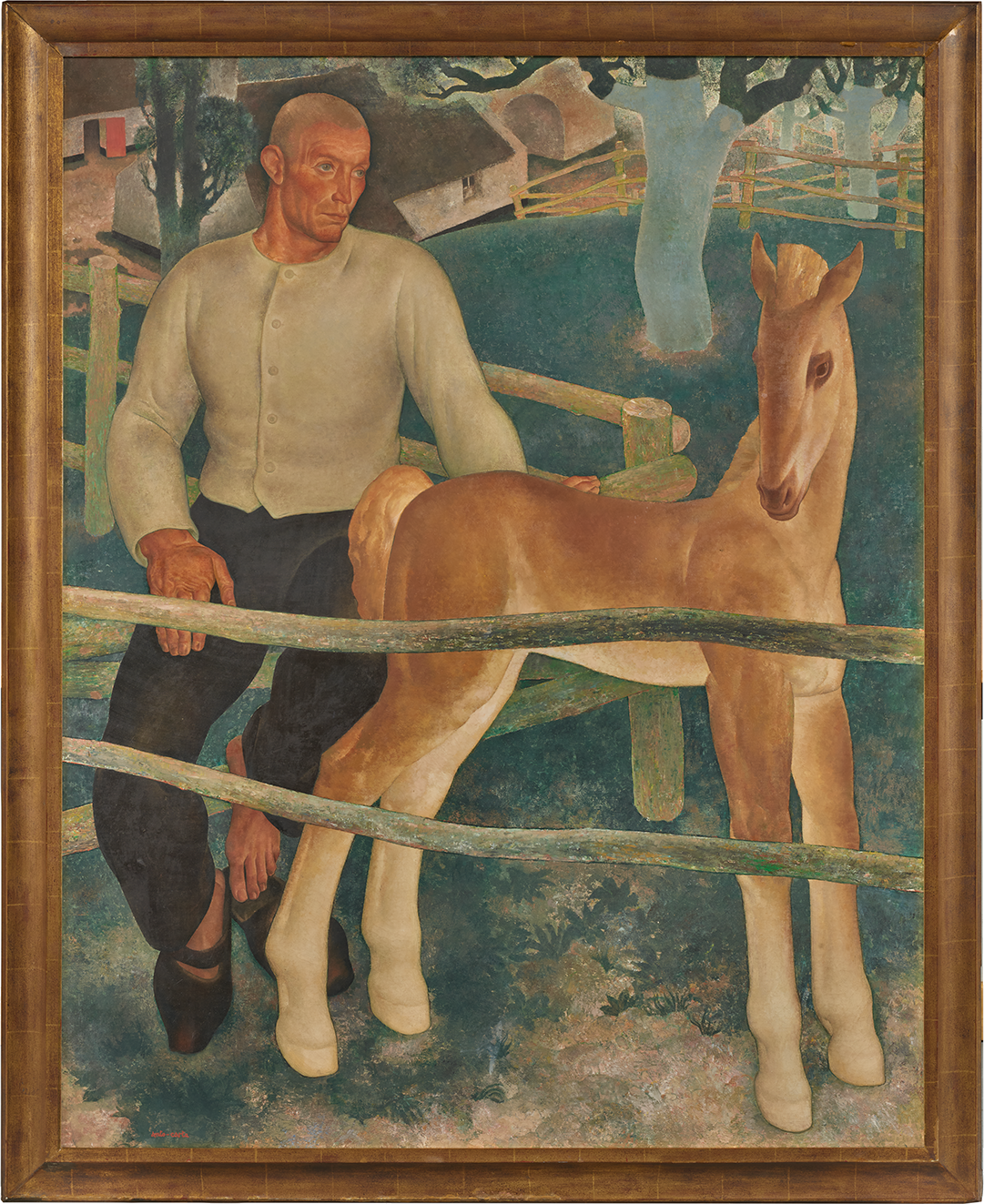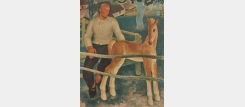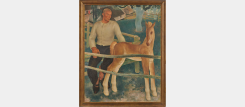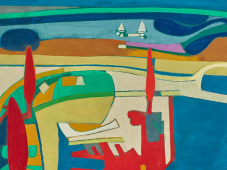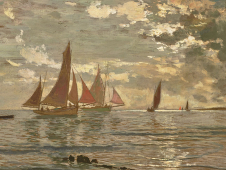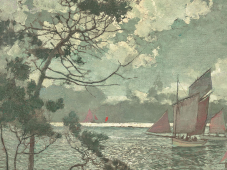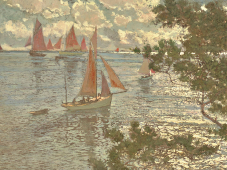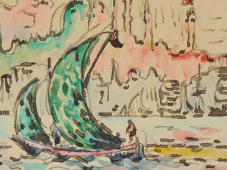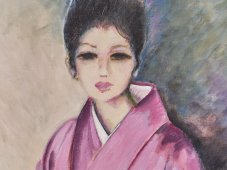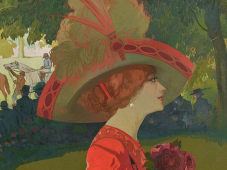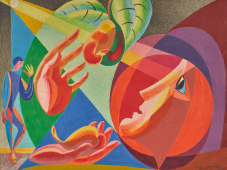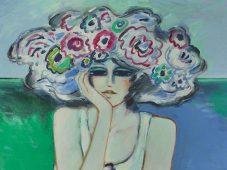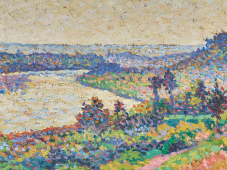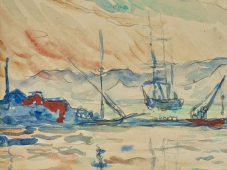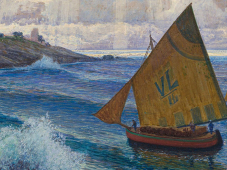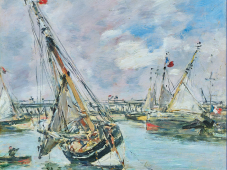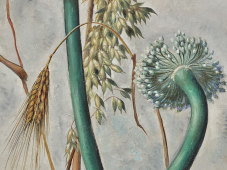Man with colt
International Exhibition at Carnegie Institute 1935
Description of the artwork
Anto-Carte uses a realistic painting technique combined with a symbolist touch. The outlines of the figures are precise, but the colours are soft and slightly diffuse, creating a peaceful, harmonious atmosphere. The artist opted for a restricted palette, dominated by shades of blue and beige, giving a sense of calm. The dominant blue and green in the background contrasts subtly with the warm tones of the foal and the light-coloured shirt of the man, naturally drawing the eye to the two main figures. The shadows are discreet but present, giving great importance to the volumes that give the characters in Anto-Carte their characteristic power.
The composition is balanced and centred on the relationship between the man and the foal. A diagonal is formed, directing the viewer's eye between the man, positioned slightly to the left and looking at the foal, and the foal. The fact that the man is sitting with one of his bare feet on the ground suggests that he is resting after a day's work. He also assumes the position of a protagonist who is both observant and protective.
The composition is marked by a series of verticals, formed by the figure of the farmer and the foal's long legs, reminiscent of the tree trunk in the background; and horizontals, with the fences, particularly the one in the foreground, acting as a guideline and framing the two protagonists. The canvas opens onto a perspective that gives a glimpse of other enclosures and lightens the composition.
The foal here is a symbol of youth and vitality, while the figure of the adult man looks tired, probably from working in the fields. The soft tones suggest the end of the day, a moment of tranquillity and rest after a hard day's work. By depicting a moment suspended in time, Anto-Carte celebrates the beauty of rural life and the primordial relationship between man and nature.
Man and his relationship with nature is one of Anto Carte's favourite themes, as evidenced by a large number of his works depicting peasant labour. In 1914, he produced several studies of peasants with a horse, and in 1925 he moved to the village of Wauthier-Braine in the Walloon countryside. Here he drew inspiration from the surrounding rural world, which would become a recurring theme in his painting, particularly that of the peasant and the worker, in a style that reflects naturalist and symbolist influences. Anto Carte celebrated this peasant world and Bornean rural life, which he would later highlight in his work by integrating them into a religious iconography.
Origin
Private collection, Philadelphia
Acquired directly from the artist by John H. Fraser in the early 1930s. Fraser was head of the art department at Marietta College, near Pittsburgh in Pennsylvania.
Literature
The 1935 International exhibition of paintings, Carnegie Institute, Pittsburgh, reproduced on plate 17, listed under number 135
Anto Carte, monographie de l'art belge, published by the Ministère de l'Instruction Publique, 1950. Reproduced under number 15
« The Blue Sky Book, prose and poetry » reproduced to illustrate “Man with colt” p.217
75008 Paris, France
Saturdays from 2 to 7 p.m.



